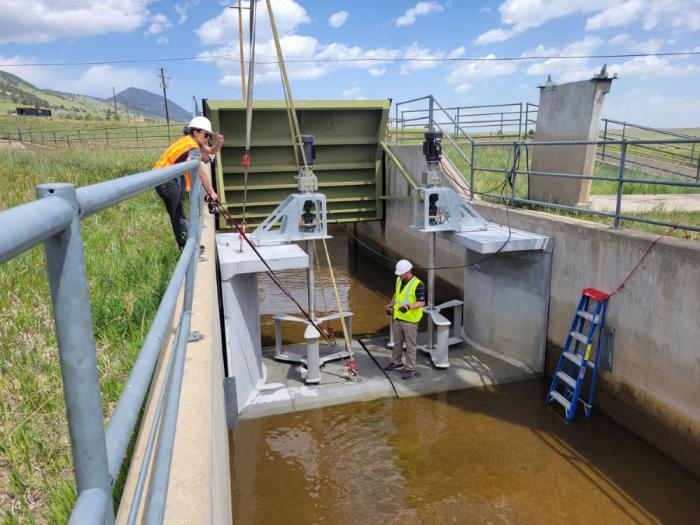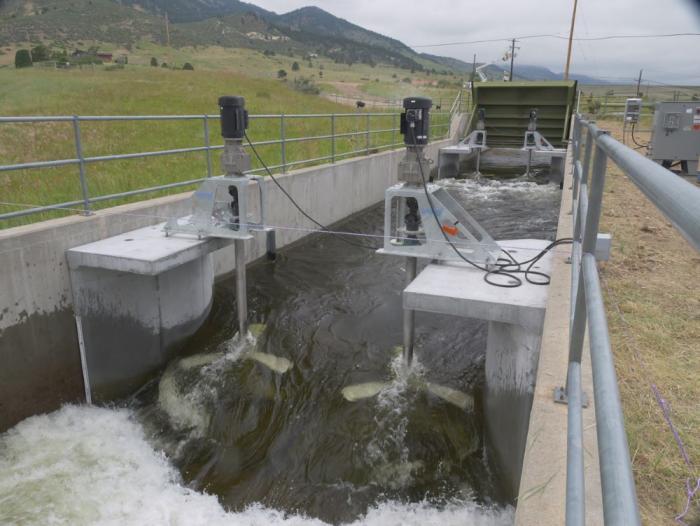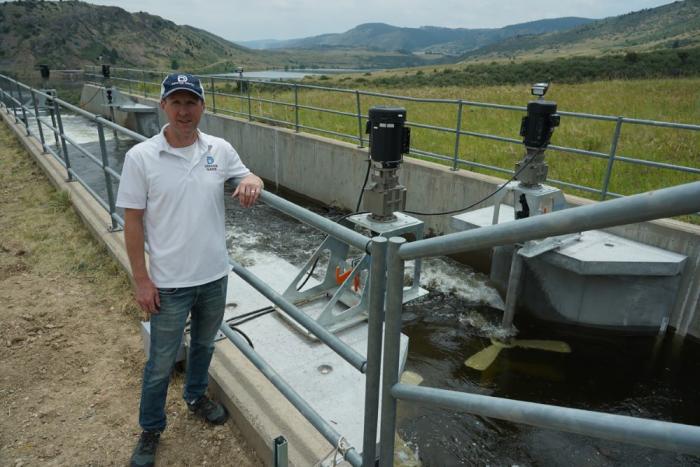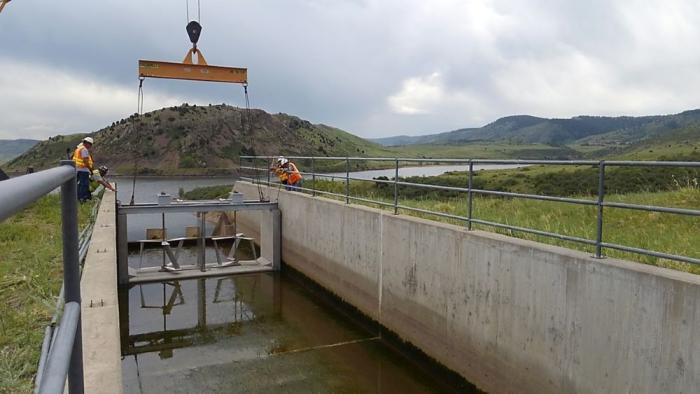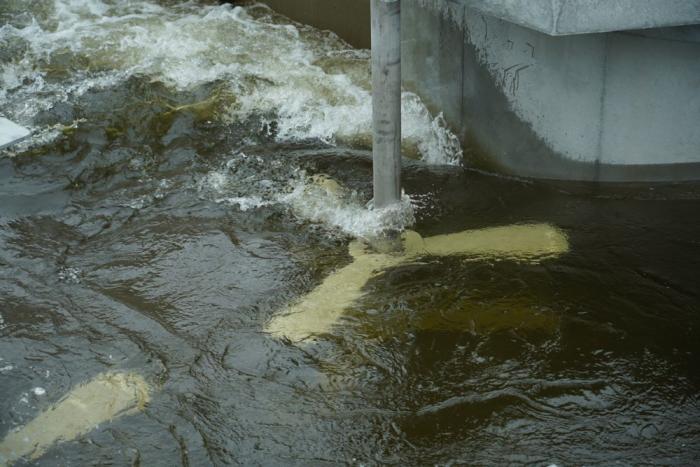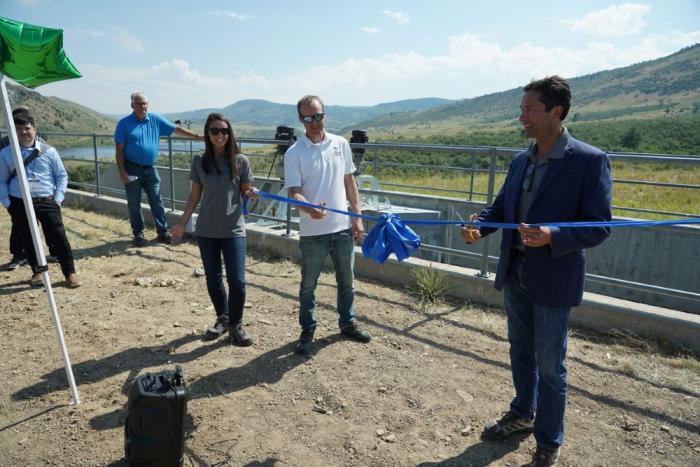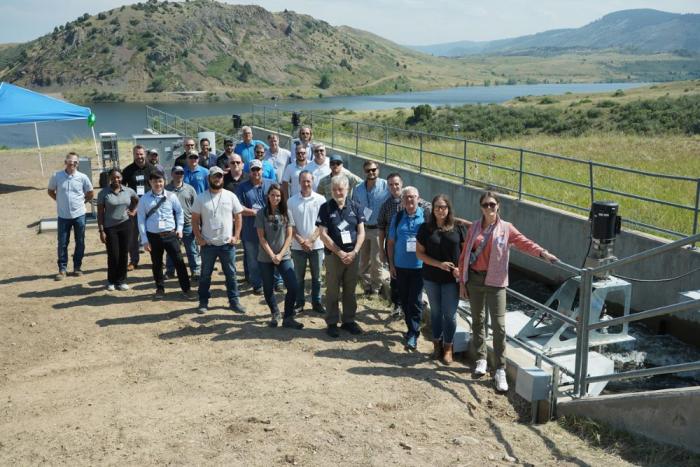Small but mighty micro turbines crank out clean energy
Nestled against the foothills of the Rocky Mountains west of Denver sits an old concrete canal that’s been delivering water to the metro area since the 1930s.
Fast forward to 2022, and the South Boulder Canal is still performing its regular job for Denver Water.
But the canal has now taken on the added role of generating hydropower, with four small turbines spinning inside the concrete waterway and producing electricity. The turbines were connected to the local energy grid in mid-July.
“Denver Water has been producing hydropower at our dams for decades, but this is the first time we’ve generated power from one of our canals,” said Ian Oliver, source of supply director at Denver Water whose team operates the utility’s dams, reservoirs and canals.
The innovative hydropower project began in 2017 when Denver Water teamed up with Emrgy Inc., an Atlanta-based company that specializes in creating clean, sustainable energy using the flow of water through existing infrastructure.
The South Boulder Canal is part of Denver Water’s northern delivery system, which brings water from Colorado’s West Slope to the Front Range. The 8-mile canal starts near Eldorado Canyon and ends at Ralston Reservoir north of Golden.
Denver Water typically runs water through the canal about nine months a year, with flows ranging between 50 and 300 cubic feet per second depending on time of the year and water demands in the city.
“Sustainability is part of our mission at Denver Water, so when we met the team at Emrgy and they told us about their turbines for low head applications, we knew it was something we wanted to pursue further,” Oliver said.
Forward this to a friend! (Did you get this from a friend? Sign up for the free, weekly TAP email.)
In 2017, Emrgy placed an initial array of turbines in the canal as part of a pilot project.
Since that time, the company has continued to innovate its design and installed four new turbines in June. The new turbines are easier to lift, handle and connect to the utility grid through the same inverters used in the solar power industry. The turbines are located at the end of the canal just before it reaches Ralston Reservoir.
The turbines look somewhat like mixers you’d see in the kitchen to stir cake batter — just a lot bigger, stronger and more advanced.
As the moving water in the canal flows past the turbines, the blades spin and produce mechanical energy, which is then converted into electrical energy. The electrical energy is then fed to a power conversion system next to the canal and delivered to the local power company’s energy grid.
“The process is unique in that it uses the kinetic energy of the flowing water and doesn’t require a large dam to build up pressure to create hydropower,” said Emily Morris, Emrgy’s CEO. “These turbines will work in any channel with moving water where energy can be extracted.”
Learn more about Denver Water’s sustainability efforts.
From the original pilot study, Emrgy refined the hydro system and made the assemblies more modular, so they are easier to deliver and install. The new design also made the turbines easier to remove for maintenance, according to Morris.
Another enhancement focused on the design of the concrete flume box assembly. The flumes include curves in the concrete structure that direct moving water to pass by the rotors more efficiently.
The new turbine system is also more “plug and play,” using the same onshore power electronics equipment used by the solar industry so it’s easier to connect to the power grid, according to Morris.
Morris said each turbine can produce anywhere from five to 25 kilowatts of instantaneous power depending on the speed and depth of the water in the canal. If running 365 days a year, that would be roughly enough to power around eight U.S. homes each year.
Denver Water’s role in letting Emrgy use the canal to refine the technology has been a win-win for both organizations. For Emrgy, the pilot program helped them develop their turbines and expand them to three other states in the U.S. and into three other countries.
For Denver Water, Oliver says putting water to work to generate electricity is part of the utility’s annual goal of being a “net-zero” organization in terms of the utility’s overall energy consumption. “Net-zero” status is when the utility produces as much electricity through its hydro and solar power units as it consumes through traditional forms of energy.
Denver Water is cutting its carbon footprint, see how.
With the addition of the South Boulder turbines, Denver Water now has 13 hydropower units at its facilities. The hydro program generates an average of 61,000 megawatts of electricity annually.
“Denver Water’s interest in hydropower is really multifaceted,” Oliver said. “We generate hydropower to sell to the local power grid, which helps offset the consumption of electricity at our facilities, and, by doing so, we’re also helping to meet our own sustainability goals.”
Power generated by Emrgy’s South Boulder Canal turbines is distributed to the local power grid. Denver Water receives a credit for the hydropower on its utility bill, which helps offset energy consumption at the utility’s Northwater Treatment Plant and Ralston Reservoir.
Denver Water and Emrgy are now studying the feasibility of adding six more turbines to the canal in the future to create a larger array of power generation, similar to installing a series of solar panels.
Morris said small turbines in canals help produce clean energy at the local level.
“In order to achieve a truly carbon-free future, we're going to have to harness the power of the sun, the wind and the power of water,” Morris said.
“Water is one of the only controllable natural resources that we have, and I'm excited about the ability to harvest the natural energy here to improve our environment.”


